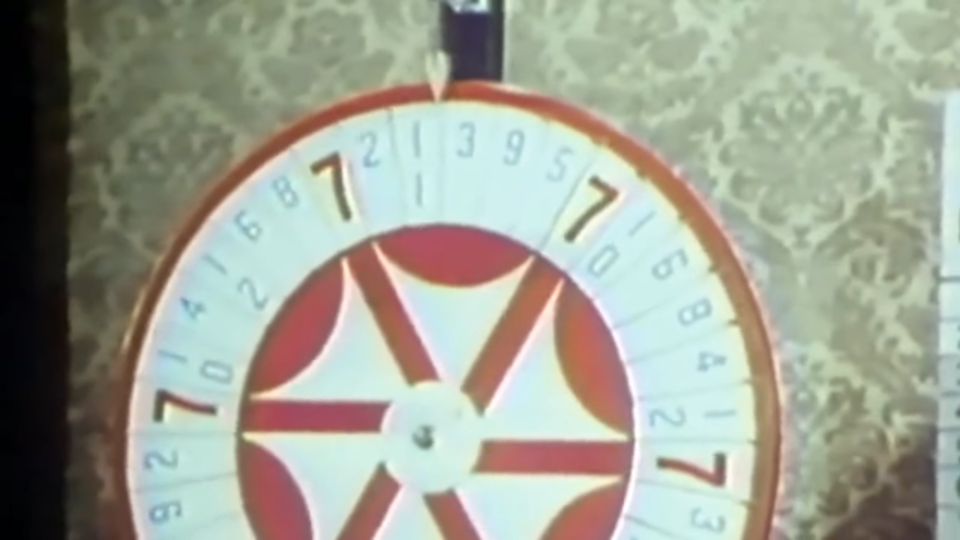The Vancouver Canucks have had to manufacture their own luck at the NHL Entry Draft.
Whether it’s exploiting secret knowledge to draft Pavel Bure in the sixth round in 1989, executing an elaborate series of trades to get both Sedins in 1999, or stealing Alex Edler from under the noses of the Detroit Red Wings in the third in 2004, it’s taken some Loki-caliber trickery for the Canucks to find star players in the draft.
If it feels like the Canucks are cursed at the draft, maybe they are. Their very first draft back in 1970 certainly featured bad luck but it wasn’t just bad luck — first, the Canucks had to have their hopes raised that they were going to get a future Hall-of-Famer before they could be dashed to the ground.
While Canucks fans may be familiar with the story of the Canucks losing out on Gilbert Perreault thanks to the spin of a wheel, they might not be familiar with all of the details.
The prototypical draft lottery of 1970
The notorious spin took place on June 9, 1970 at the Queen Elizabeth Hotel in Montreal, which is where the NHL Amateur Draft was held every year in those days. The draft was still relatively new. The first draft was in 1963 and the 1970 draft was only the second draft since the abolishment of the sponsorship system that gave NHL teams exclusive rights to prospects on junior teams they sponsored.
That meant that Gilbert Perreault, instead of belonging to the Montreal Canadiens who sponsored his junior team, could be selected by any team in the 1970 draft. The talented centre, who was billed as the next Jean Beliveau, was certain to go first overall and two expansion teams had a chance at that pick: the Vancouver Canucks and the Buffalo Sabres.
The NHL decided that the best way to determine which of the two teams picked first overall was a prototypical draft lottery: instead of picking lottery balls out of a machine, they would spin a carnival prize wheel and whoever won the spin would get the pick and, therefore, Gilbert Perreault.
@passittobulis ♬ original sound - passittobulis
Here’s a not-so-fun fact for Canucks fans: that wheel spin was the third game of chance the Canucks lost that day.
First, there was a coin flip to determine which of the two teams got the first pick from the waiver wire. The Sabres won the flip and nabbed their backup goaltender, Joe Daley. Then they spun the wheel to determine who got the first pick in the expansion draft. The Sabres won that too and took winger Tom Webster with that pick, then traded him to the Detroit Red Wings for Roger Crozier, who served as their starting goaltender.
But the most important spin was for the amateur draft.
"It went from elation to shock."
The Sabres had the numbers above seven, while the Canucks had the numbers below seven on the wheel. There were six big red sevens spread evenly around the wheel; spinning one of those would force a re-spin.
NHL President Clarence Campbell stepped up to the wheel, gave it a big spin, then announced, “The number is one!”
The Canucks’ table, headed up by the team’s first general manager Bud Poile, leapt to their feet to celebrate. They had won the spin, earning them the first-overall pick in the draft and a franchise forward in Gilbert Perreault to provide the foundation for their fledgling team.
The celebration was short-lived, however, as an astute observer from the Sabres’ table pointed out Campbell’s error. It happened to be a former Canuck from their WHL days: Al Millar, the backup goaltender with the 1968-69 Canucks. He was now a scout with the Sabres and his eyesight was keen enough to pick out the mistake.
“Miscall!” yelled Millar. “That’s not number one, it’s number 11!”
Sure enough, the wheel had landed on 11, not one. Campbell acknowledged his mistake and now it was the Sabres’ turn to celebrate their good fortune as the Canucks lamented their bad luck.
“It was shocking,” said David Poile, who was at the Canucks’ draft table with his father, Bud. “It went from elation to shock.”
The impossibility of spinning a one
Here’s the kicker: there were no number ones on the wheel at all.
There were 36 partitions on the wheel, enough for each number from 1-12 to appear three times. But with six big red lucky sevens on the wheel, there wasn’t enough room for the number one. Instead, there were three each of the numbers 2-6, giving the Canucks 15 numbers around the wheel, and three each of the numbers 8-12, giving the Sabres 15 numbers as well.
When Campbell said, “The number is one!” everyone should have immediately known something was wrong. The wheel landing on one was an impossibility.
But because the two-digit numbers were stacked one on top of the other instead of written side-by-side, Campbell just looked at the top number of the “11” and saw the one.
The confusion caused by Campbell was some extra salt in the wound for Bud Poile and the Canucks. They lost out on Perreault and had to settle for picking second overall, taking Dale Tallon, who was a talented defenceman — and sometimes forward but that’s another story — but he was no Gilbert Perreault.
After Poile lost a coin flip and two wheel spins, he was disconsolate.
“I’ll tell you this,” he said. “I’m not going to call home tonight. The way things are going, my wife is likely to tell me the house has burned down.”



